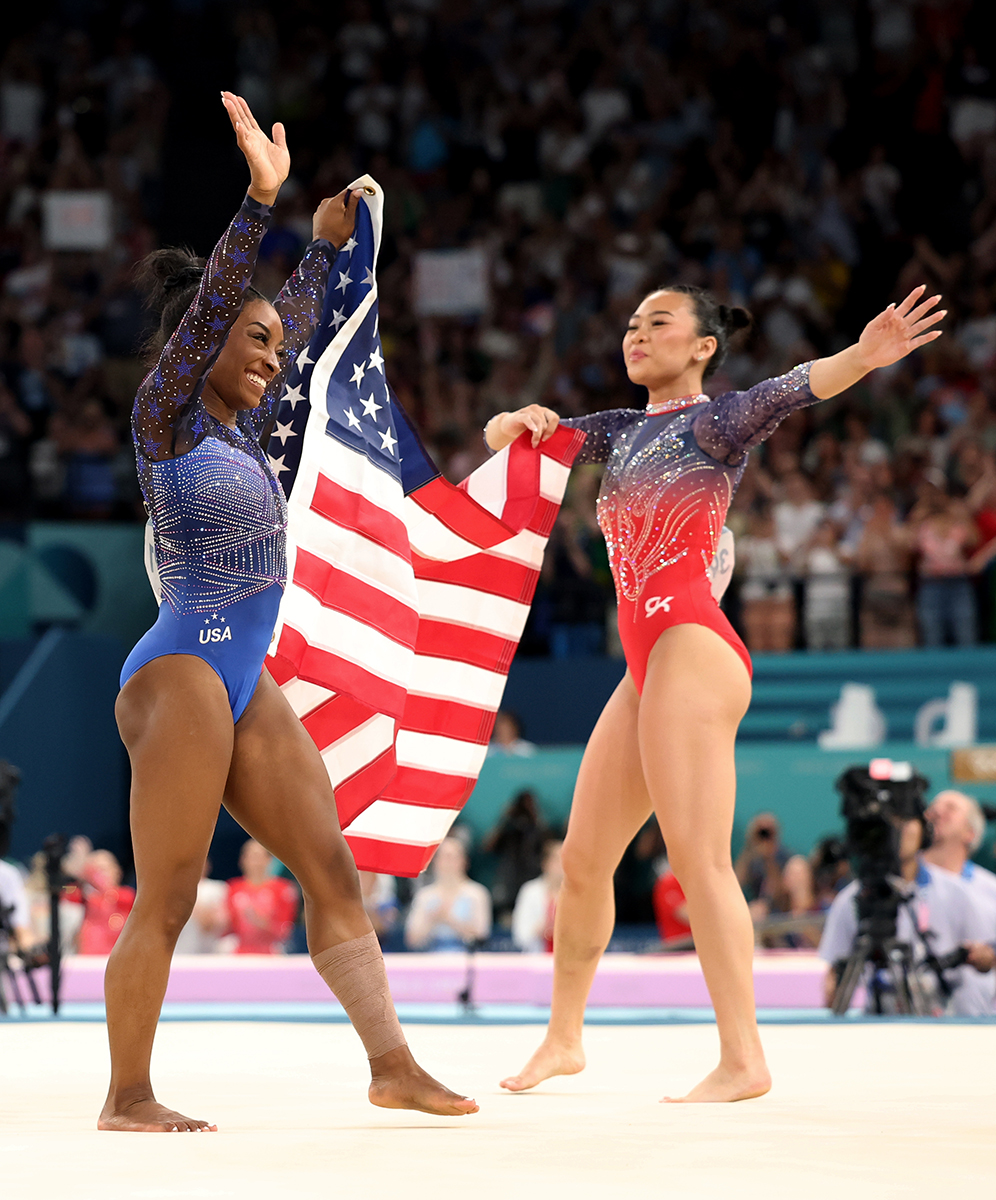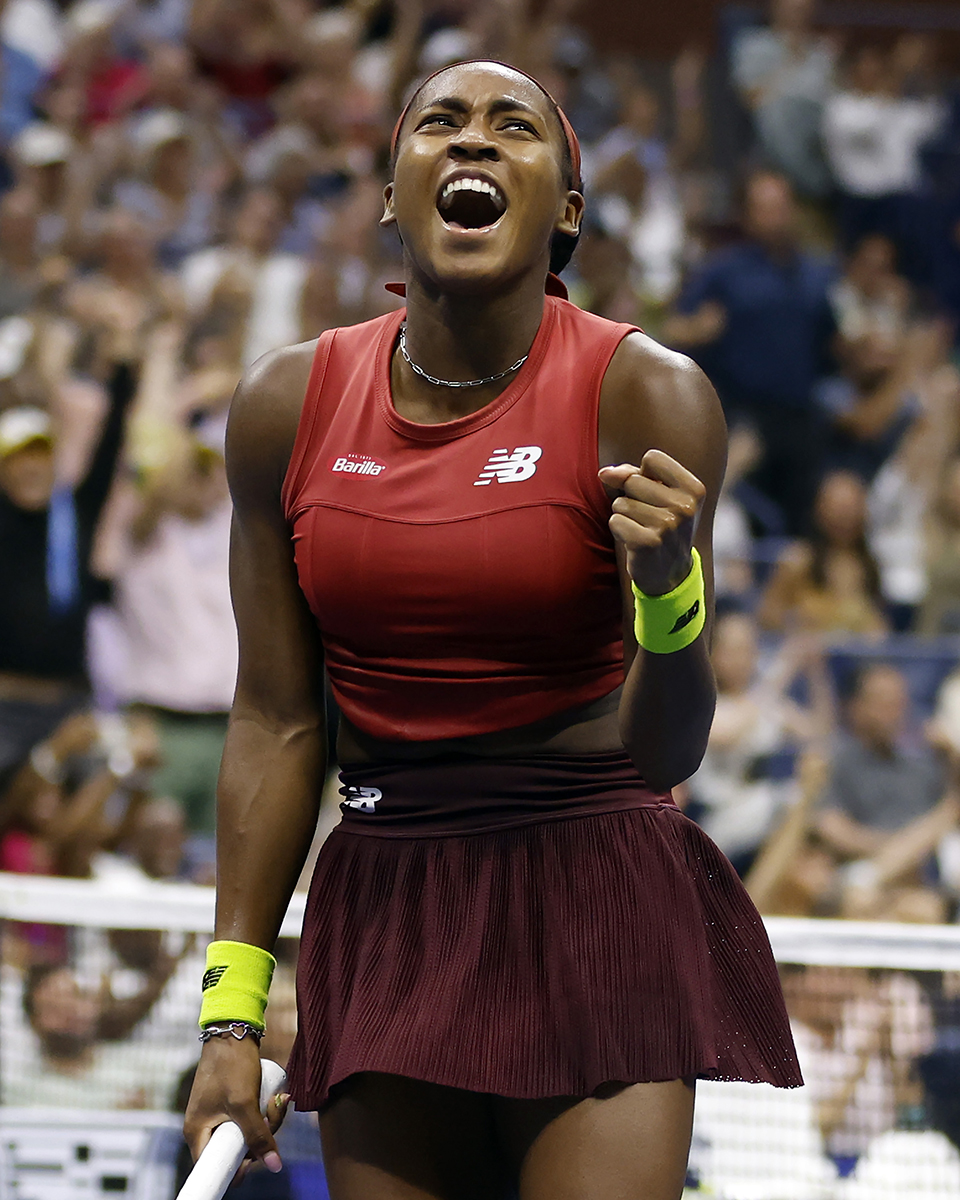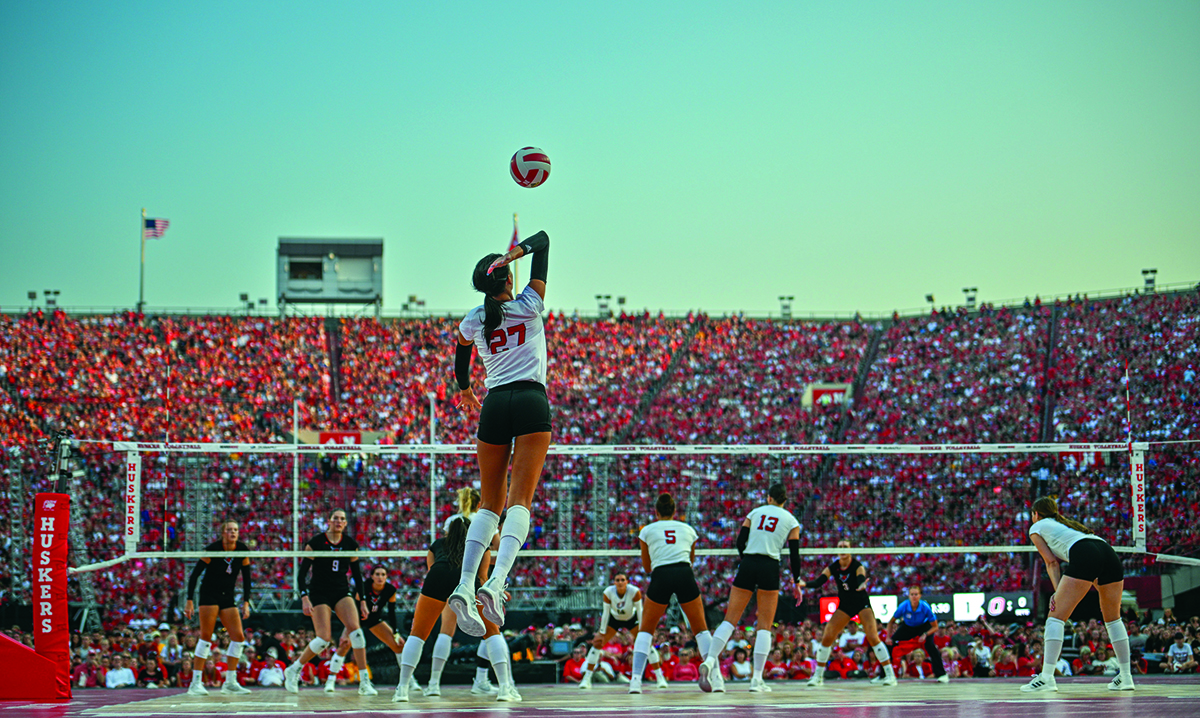Attendance at live events and TV ratings shattered records, and phenoms from a variety of team and individual sports captivated the public, (finally) convincing plenty of doubters that women can ball.

“Women’s sport is having a moment that it should have always had. I feel like tennis has had its moment and it’s international, and it’s huge and it’s always going to be there. Now it’s time to lift up other sports; women’s soccer, women’s basketball, there’s so many other sports that women do so great, let’s put it on that platform that tennis is on.”
—Serena Williams to CNN
The first in line arrived at 6:30 in the morning, a full 13 hours before tip-off. Their actual journey started 24 hours earlier, back when they boarded a flight from Boise, ID to travel 1,800 miles for a college basketball game. The commitment of Trenton Kemp and Maguire Kemp certainly merited praise, but it is the combination of who they are and whom they came to see that imbued their arrival with true significance—a father-and-son duo, traveling all that way to see a women’s basketball phenom.
It seems that Caitlin Clark is what the women’s sports movement has been waiting for—a shooting star who embodies everything American sports fans crave—unapologetic fearlessness and daring, combined with absurd talent and just enough bravado. She doesn’t just take logo shots; she makes them effortlessly, all while dishing out assists to lead her Iowa team to the national title game.
Clark is not the first to possess her athletic prowess and raw talent—and she will be the first to laud the women’s upon whose shoulders she stands—but she appears to be the most meaningful in the effort to raise women’s sports to new heights. Her profile also rose just as college athletes were permitted to earn money off their Name, Image, and Likeness, the combination of her skill and State Farm ad campaign turning Clark arguably into the first truly household name in women’s college basketball.
The Kemps were emblematic of an entire fan base seemingly grown out of the Iowa cornfields, people of all ages, genders, and backgrounds flocking to games in Iowa City and on the road (the Kemps went to Indiana) to catch a glimpse of Clark. She provided a Field of Dreams-esque template, building up the curiosity around women’s basketball so people, in fact, did come to watch. And while they came to see Clark, lo and behold, they discovered a game that warranted their attention, filled with a collection of talented athletes, compelling stories, and tight competition.
An estimated 18.9 million people tuned in to watch Clark and the Iowa Hawkeyes take on South Carolina in the national championship game, obliterating the TV viewership record (and outdrawing the men’s championship that took place the very next day).
As the confetti fell around the national championship-winning and undefeated Gamecocks, it felt natural to also look for shards of glass, to search for affirmation that the glass ceiling finally had come crashing down, too. But has it? Is this the moment? Fifty-two years into the protracted story of Title IX when women were finally able to play school sports, is Caitlin Clark the exclamation point of arrival?
There are so many indications that it has. At the granular level, more than 3 million girls are participating in high school sports, including an upward tick of 32 percent now involved in NFL-sponsored flag football.

Sign of the Times
There are other indicators, too, that this is not an anomaly but a clarifying moment. Two years before grabbing what was a roundly unexpected gold medal at the Paris Olympics this month, the U.S. Women’s National Team won a protracted lawsuit, not only earning $24 million in backpay, but assuring equal pay in tournaments going forward. Last August, 90,000 people jammed into a Nebraska football stadium to watch women’s volleyball. Less than a month later, more than 3.4 million people tuned in to watch Coco Gauff win the US Open, the highest-rated women’s major championship in ESPN history. Tennis legend Billie Jean King helped fund and launch the Professional Women’s Hockey League, which dropped its first puck in January. A month after that, 21 years into its existence, the WNBA Finals also enjoyed record-setting viewership numbers.
Clark and her WNBA draft-mates Angel Reese, Kamila Cardoso, and Cameron Brink turned the pro league’s selection show into an event and helped the league to an eye-popping 93 percent surge in preseason ticket sales, and this year, for the first time, WNBA players will travel on charter flights. But on the flipside, with more success comes more scrutiny, and women in sports need to be ready for it. It is not unfair for the Washington Post to write an honest, if not lauding, profile of LSU coach Kim Mulkey. This regularly happens in the men’s game. It’s not sexist; it’s unbiased. To take the coach’s spin and attack the reporter is not helping women’s sports. Similarly, when South Carolina and LSU get into an in-game scuffle, trying to diminish what happened only cheapens the competitive spirit from which it was borne.
Women’s sports no longer need to be defended; they need to be sustained. But to miscalculate how critical that pivot would be to risk the growth we’ve achieved. We have been here before. Hot off Brandi Chastain’s thrilling penalty kick winner in the 1999 World Cup, the WUSA professional women’s soccer league launched, introducing a landmark in women’s sports. Three years later, unable to land enough corporate sponsorship to cover a $20 million shortfall, it folded.
Women’s sports are at a bigger and bolder precipice now, with sturdier professional soccer (the NWSL), basketball (WNBA) and hockey (PWHL) leagues. Advertisers and corporations are flocking to women’s sports like never before. Ionescu, Clark, A’Ja Wilson, and Breanna Stewart all have their own signature shoe lines. And the advent of streaming services has opened much-needed TV rights options for women’s professional leagues. The NWSL has a $60 million deal with various platforms, including Amazon. The business model, in other words, exists.
But Clark’s first WNBA contract is worth $338,000 over 4 years. The contract for Victor Wembayama, the number-one pick in the NBA draft, is worth $55 million. People all the way up to 1600 Pennsylvania Avenue weighed in on the disparity, with President Biden saying on X, “Right now, we’re seeing that even if you’re the best, women are not paid their fair share. It’s time we give our daughters the same opportunities as our sons and ensure women are paid what they deserve.’’
That’s a seemingly fair bit of outrage. Except: the WNBA made $200 million last year; the NBA made $10 billion. That’s the real bottom line in a capitalistic market. To scream about the salary dispute without acknowledging why it exists prevents women’s sports from closing the gap. It is no longer enough to be angry; it’s time to act. There is still so much room for growth and to not capitalize is to potentially fall into the same pratfalls that soccer faced post 1999 World Cup.


Brandi Chastain celebrates after making the winning goal at the FIFA Women’s World Cup game against Team China on July 10, 1999.

Lasting Impact
The sobering truth is that, by and large, women’s team sports have not been nearly profitable enough to warrant the same treatment as men’s. Of the 20 female athlete earners from a year ago per Forbes, only three—Megan Rapinoe and Alex Morgan (soccer) and Candace Parker (basketball)—came from team sports.
Some of that is historical. Men’s sports have had a considerably longer on-ramp, and the education of people predisposed to assume that women’s sports are less competitive, less talented has been a Sisyphean hill to climb. In its fight against offering equal pay to members of the U.S. Women’s National Team, for example, the U.S. Soccer Federation attempted to argue in court papers that male players have “more responsibility” and the men’s team “requires a higher level of skill” than their female counterparts.
It seems the less evolved amongst us have at least been shepherded into a corner, but they are no longer the ones who merit attention. They have finally, if never entirely, been silenced, and to waste energy on outrage is to overlook the need for action.
To conquer the next step, to find staying power in a crowded sports market and to merit pay on scale with their male counterparts, women’s sports needs to capitalize on what this year has wrought. Fans need to be enticed into the seats with a good product, and the players marketed in such a way that the demand for a Clark jersey is as high as that for a Wembanyama.
Caitlin Clark is not replicable. Shooting phenoms are legit shooting stars; they come around only every so many years. Part of Clark’s allure was the possibility of a 40-point game and volume scoring of chasing and taking down Pistol Pete Marvichich’s record.
This doesn’t mean sports can’t ride her coattails; it can. There is, after all, a comet’s tail available for transportation. It is incumbent on other players—professional and college—to step boldly into the spotlight and accept the glare for both its good and its bad. Celebrate success, deal with criticism, and simply play the game.
The same effort and energy that has been exhausted fighting the necessary fights must be turned into ensuring that the foundation is strong enough to sustain a future.
The Kemps found their way to Bloomington, IN from Boise once. Now it’s time to make sure they find their way back.





